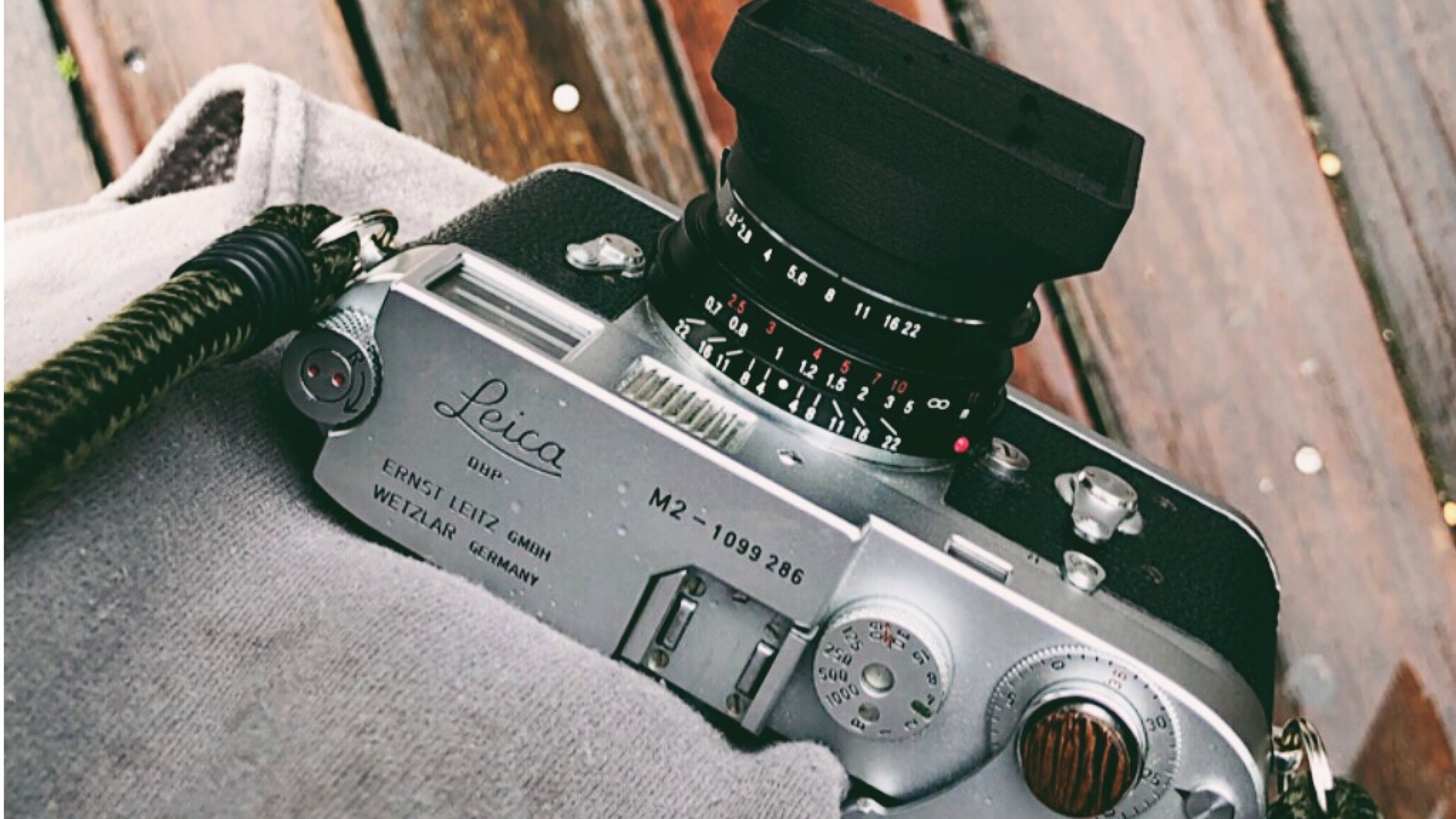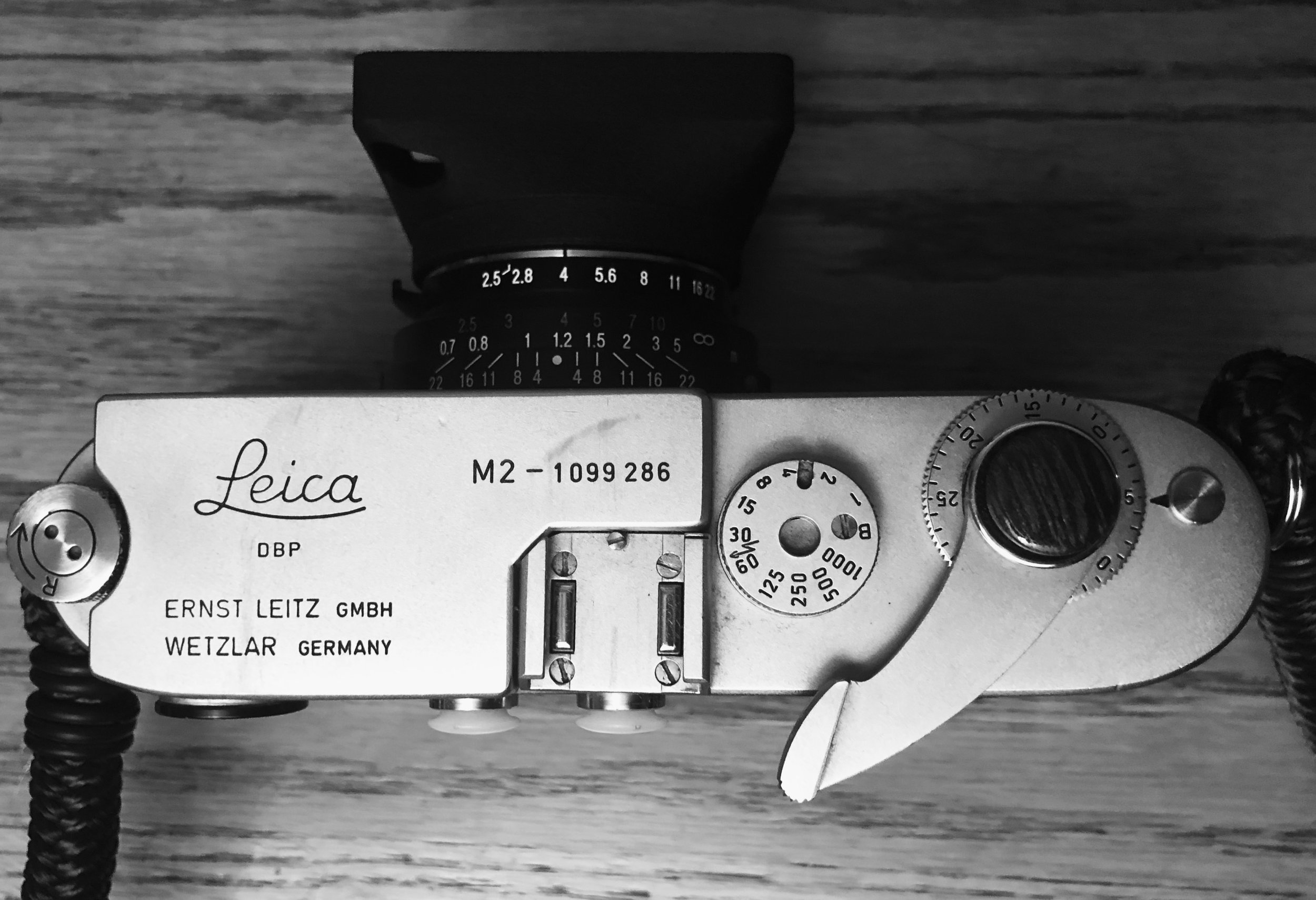About a year ago I decided to purchase my first Leica. A friend of mine named Ivan let me borrow his m3 and after shooting with it for a couple of days, I really liked it. After selling some of my other gear off I eventually got my hands on the camera that best suited me, the m2. As much as I loved the m3 I’m more of a 35mm focal length shooter. The m3 was made for 50mm, so the next best thing was the m2.
My m2 features a .72 magnification viewfinder and pair that along with the 35mm frame lines you have a nice big and bright viewfinder, suited for the photographers who primarily shoot that focal length. The rangefinder patch is nice and clear which makes focusing quick, easy and accurate. I’ve been shooting with this camera for the last 8 months putting through multiple rolls of both color and black and white so today I wanna share my thoughts with you. In this article I will cover;
The camera’s basic functions
The handling
And the price point
And at the very end I will share with you my honest opinion on the m2 and if I would recommend it.
Basic Functions
Leicas are generally known for their simplicity and ease of use and the m2 definitely lives up to that legacy. The camera has no on board light meter which for me is actually a plus. I can practice sunny 16 more and after a while of shooting a fully manual camera, you’ll find your own to eyes actually become a built in light meter. With time you’ll be able to know your exposures. But for some people this can be an absolute turn off. For the photographers who would like to have a meter in camera you only have two options; 1.) Carry an off camera light meter or 2.) Learn how to meter by eye because the m2 isn’t going to help you.
The camera’s top plate features the brand’s name on the left side of the hot shoe. Unfortunately this model does not have a red dot so if you’re looking for one of those you may wanna check out the Leica m6. On the top right side you will find the shutter speed dial. Just about the size of a dime. I should add that the dial is slightly stiff. You still can adjust it with one finger but there is quite a bit of resistance so you might wanna work on your finger strength. The shutter speeds range from BULB (B) all the way up to 1/1000 and has a flash sync speed of 1/50.
One of the BIGGEST things people commonly complain about is the frame counter. On the m3 the frame counter is displayed through a window where as the m2 has a manual frame counter. That’s right its exposed and can be touched with your finger, in fact you have to manually reset it to 0 once you’re done with a roll. The good thing is the frame counter advances by itself, so after you click the shutter you will see the wheel move forward as you advance the film lever. The frame counter clicks for every stop so it stays in place and doesn’t freely move around.
Speaking of film levers the m2 has probably one of the SMOOTHEST levers i’ve ever felt. The SLR equivalent would be something along the lines of the NIkon F3. The lever on this camera seems to have just the perfect amount of resistance while still being smooth and once you hit the very end of the throw the lever shoots right back into the starting position nicely. This may appeal to street photographers who rapidly work scenes. I’ve been able to fire off up to 3-4 shots within 2 seconds while out shooting. It’s, SO GOOD!!
The shutter button itself is nothing to brag about. it’s fairly standard and can have a a soft release shutter attached to it. I like to protect mine with shutter buttons for the extra added aesthetic (Check out Themoregooder.com)
The rewind switch is at the front of the camera, which needs to be switched down first then you can take the film rewind knob and spool your film back up. It also features a self time and this little switch to help manually cycle through the frame lines. On the right of the lens mount you have the button release for your lenses.
This after all is a Leica M mount camera so it obviously takes M mount glass. The problem is, Leica glass is very expensive and being 21 years old I can’t afford any of that beautiful glass yet. Luckily companies like Voigtlander, Zeiss and 7 artisans make modern M mount glass for a fraction of the price. Thought it’s hihgly debatable if these lenses can withhold the same image quality standard as Leica glass but in my experiences some of them can get pretty darn close.
The lens I have mounted on my m2 is the Voigtlander 35mm 2.5 Color Skopar. It’s absolutely not the SHARPEST lens but it gives me good enough image quality for the work I do with it. This is truly a Street Photography lens, being that it’s 2.5 I’m shooting mostly at f8 and guess what? It’s sharp enough to make 11 x 14 prints with no issue! Factor in the size and the short focus throw, it even comes standard with a focusing tab! This is my top pick for CHEAP 35mm lens for your Leica. BUT. as most Leica users will recommend you get your best made images with true LEICA optics. Yes Leica glass is sharp and really is top notch quality. After all the lens is what will give you good or bad image quality on film so if you wanna get the best of the best expect to be dishing out $1300 plus for a Leica lens.
Voigtlander 35mm Color Skopar
Sample images taken with the Leica m2 and 35mm Color skopar
As I’ve mentioned the Leica m2 is known best for it’s 35mm frame lines. With my copy being the .72x magnification finder the frame lines for a 35mm lens fills most of the frame. In the images below you will also see the 50mm and 90mm frame lines. This is one of the m2’s biggest advantages as this set of frame lines allows you to cover the wide end at 35mm, mid telephoto or “standard” lens at 50mm and telephoto for nice close up portraits or abstract work at 90mm. Very useful it is indeed but please keep in mind if you are mostly a 50mm shooter the Leica m3 was made for that focal length. and will cover your viewfinder more.
35mm 50mm 90mm
The back of the camera is quite simple, you have a little ASA dial to help remind you what film speed you’re shooting and also the back door. The back door flips open once the bottom plate is removed. The bottom plate can be removed by simply lifting the lever, twisting and pulling off.
The Leica m2 features the m3’s loading system which requires you to insert your film leader in the take up spool. Then you have to stretch your film out and reinsert the whole assembly back into the camera. Once reinserted you can close the back door and advance the film, put the cover on and shoot away. It seems complicated but trust me, it’s fairly simple once you get the hang of it.
How does the Leica m2 handle?
Very well actually! The camera is light without feeling cheap. it’s mostly made of all metal and feels solid in the hands. The viewfinder is nice and big and for anyone who likes the 35mm focal length this viewfinder will be a treat for you. The shutter is quiet, no one will hear you in a city setting so street photographers REJOICE! And the overall operation is smooth. I’ve never assembled a gun before but if i were to image what that would feel like, shooting the m2 would best describe it.
Being a rangefinder, the viewfinder is on the left side of the camera so left eyed shooters please keep this in mind because it may affect your shooting. Other than that, I have absolutely nothing less to say. The camera just WORKS. You need 1/1000 of a second? You got it. You need a big and bright viewfinder,? You got it. This is truly a precision tool and even though it lacks some of the features of other cameras. I think that’s what makes it special. No meter means you have to manually expose. 1/1000 of a second limits you so you have to work around that and it’s these limitations and lack of features which has really gotten me to fall in love with the camera. It’s tough to say this but YES, this camera does make you a better “Technical” photographer. And i say “technical” because the Leica won’t help you take better photos, but it will help you learn exposure and how to compensate when you’re given a set of limitations. Unless you already have mastered the technical side of things, the m2 may just give you that extra push.
The Price Point
Leicas are known to be expensive, and the m2 is still expensive BUT I’ve noticed a trend in which they are probably one of the cheaper models you can buy. Along with the m4 and it’s variants the m2 can be seen ebay for less than $1000 bucks. I think i got mine for about $500 so as long as you can be patient and wait for a good deal the m2 is a great value. For what you’re paying for you will have a camera that will work every time and will do some for the rest of your life as long as you consistently maintain it.
Would I Recommend this camera?
Absolutely. The m2 is a blast to shoot and it’s built very well. If you have been tampering around with rangefinders I would highly suggest you keep this camera as an option. For those of you who don’t have much experience shooting a full manual camera and want something more automated check out the Voigtlander Bessa series cameras. Specifically the R2a/R3a/R4a. These cameras all feature a built in light meter as well as aperture priority. In fact, I still own an r2a and shoot it along side my m2.
At the end of the day, the m2 is simply a camera. It’s also a very simple camera. It’s really up to you to decide. Do you want a simple camera that just works? A camera that takes no battery, has a top shutter speed of 1/1000 of a second and has a bright rangefinder patch? If so, the m2 may just be the camera for you.
But if you’re someone who needs a light meter, or maybe likes to shoot their lenses wide open and need shutter speeds faster than 1/1000, you’re better off trying something else out. Again I would recommend the voigtlander bessa series cameras.
Thank you for reading this article! If you’d like to support me please check out the prints I have available for sale in my shop!










